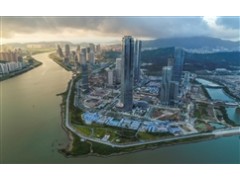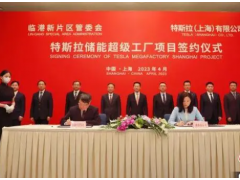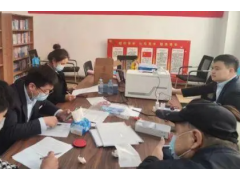It will be one year since the Regional Comprehensive Economic Partnership Agreement (RCEP) came into force. International observers believe that despite repeated delays in the COVID-19 epidemic and the complex and severe global economic situation, RCEP continues to release dividends and help speed up and upgrade regional economic and trade cooperation. Regional economic cooperation has maintained a good momentum of development, showing strong resilience and great potential.
Improve the quality and efficiency of trade and investment
After the RCEP came into effect on January 1 this year, tariff concessions, cumulative rules of origin, trade facilitation and other system dividends will bring real growth and benefits to countries and their enterprises.
Oramon, director of the Trade Negotiation Department of the Ministry of Commerce of Thailand, said that the most obvious benefit of RCEP's effective implementation is to boost trade among member countries in the region and further promote regional economic integration. According to data from the Ministry of Commerce of Thailand, in the first nine months of this year, the total value of imports and exports between Thailand and RCEP member countries increased by 10.1% compared with the same period last year.
Hu Yishan, chief consultant of the Malaysian Pacific Research Center, said that for Southeast Asian countries, RCEP has played an important role in further eliminating intra-regional trade barriers.
Liu Ziyang, a professor at Kyunggi University in South Korea, said that RCEP is not only the free trade agreement with the largest population and largest economic and trade scale in the world, but also a comprehensive, modern, high-quality and reciprocal free trade agreement.
The series of arrangements represented by RCEP, represented by the cumulative rules of origin, are effectively reducing production costs in the region, improving trade efficiency, and strengthening cooperation in the industrial and supply chains in the region. Li Yan, Chairman of Petronas China, said that RCEP has promoted regional industrial circulation and division of labor cooperation, and formed a resource and technology complementary mechanism, which is conducive to the full use of the advantages of member countries in international trade.
Common development adds momentum
At present, the world economic growth is sluggish, and economic globalization and free trade are facing severe challenges. Observers believe that RCEP has provided stability and certainty for the regional economy and even the world economy, effectively hedging the impact of unilateralism and trade protectionism.
Gu Qingyang, an associate professor at the Lee Kuan Yew School of Public Policy at the National University of Singapore, said that in the context of the world's economic difficulties, RCEP has injected strong growth momentum into emerging markets. The latest report of the Asian Development Bank raised the economic growth forecast for Southeast Asia in 2022 from 5.1% to 5.5%, reflecting to a certain extent the RCEP's expectation of stimulating the economy of ASEAN countries.
Peter Drysdale, director of the Institute of East Asian Economics at the Australian National University, said that in the first year of its entry into force, RCEP has shown the importance of filling the gaps in free trade agreements, boosting regional trade, and strengthening regional supply chains. It has the potential to serve as a platform to Asian trade dividends are projected globally.
Gao Jinhua, Assistant Minister to the Prime Minister of Cambodia, said that RCEP is a victory for free trade and multilateralism. Through joint efforts, RCEP has become the world's largest free trade area shared by everyone, and all member countries will benefit from RCEP cooperation.
Zhang Jinxiong, Chairman of the Indonesian Chinese Entrepreneur Association, said that RCEP integrates funds, resources, professional technology and services to form a complete cycle and ecology of regional economic cooperation. In the uncertain world development pattern, RCEP provides stability and order, and will be able to promote the continuous development of the region and even the world economy in the future.
Broad prospects for multilateral cooperation
According to the latest data from the General Administration of Customs of China, in the first 11 months of this year, China's import and export to ASEAN increased by 15.5% year-on-year, higher than the overall growth rate of China's foreign trade. China is still ASEAN's largest trading partner, and ASEAN's position as China's largest trading partner has been further consolidated.
Observers believe that China provides market space and industrial system support for RCEP to fully release the institutional dividends, and has made important contributions to promoting the prosperity and development of the Asia-Pacific region.
Lao Deputy Prime Minister Song Sai said that RCEP will help expand the circulation of goods, funds and services, enhance the resilience of the regional value chain, and make it better integrated into the construction process of the China-ASEAN Free Trade Area.
Liu Ziyang believes that for South Korea and China, RCEP is conducive to improving the level of trade liberalization between the two countries, promoting the deepening of cooperation in third-party markets, and will also promote cooperation between South Korea and China in the fields of technological innovation and service industries.
Under the RCEP framework, China and ASEAN have broader common interests in sharing super-large-scale markets, further leveraging complementary advantages, and rationally allocating production factors. The prospects for industrial chain supply chain cooperation are also broader.
Junichiro Nakazuka, vice chairman of the Japan Chamber of Commerce in China and general representative of Mitsubishi Corporation East Asia, said that China, Japan, and ASEAN can further leverage their respective advantages to achieve effective complementarity and integration, and "there is great potential for cooperation."




